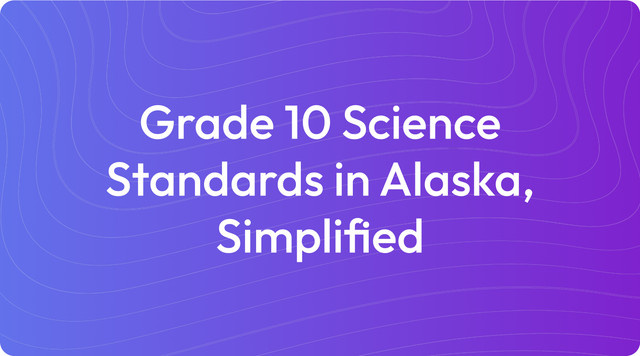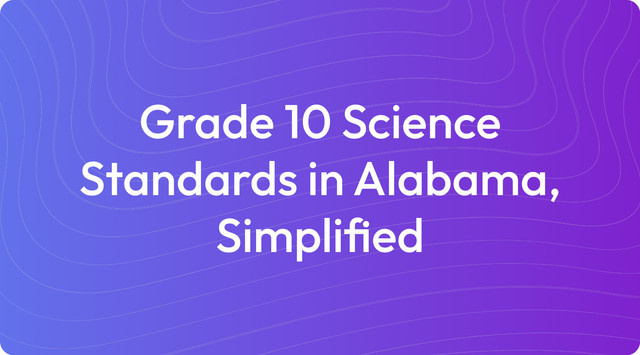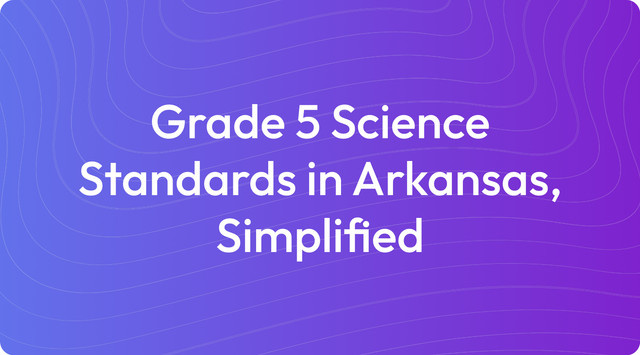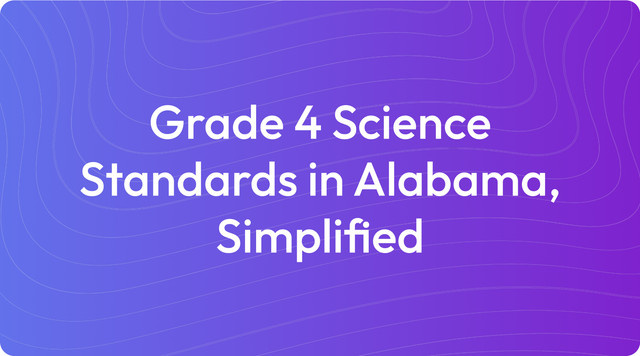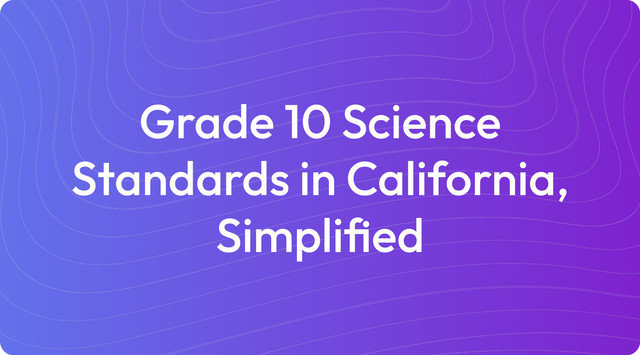Grade 7 Science Standards in Arkansas, Simplified
Grade 7 science in Arkansas features forces, living systems, and human impact. Find simple standards—read more on TeachShare!
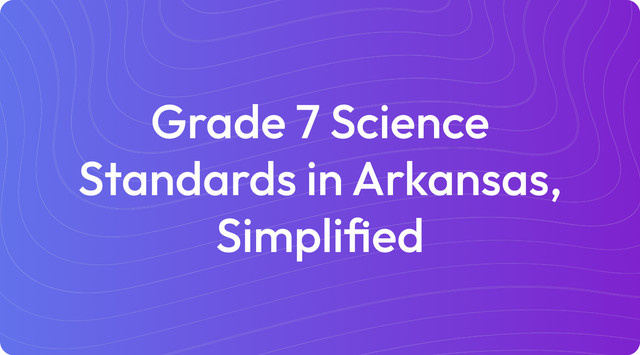
We know that working with state standards is a significant part of your planning process, as they form the foundation of your curriculum. Our goal is to provide you with clear, practical resources to help you understand and apply these standards in your classroom. Let's start with a high-level look at what education standards are and how they function.
Education standards are learning goals that outline what students are expected to learn by the end of a grade level. For teachers, these standards serve as a framework for instruction but do not prescribe specific teaching methods or curriculum materials, allowing for professional autonomy. For instance, the Grade 7 Science Standards in Arkansas are structured around core content areas like Physical Science, Life Science, and Earth and Space Science, defining the key concepts for that year.
What Are Grade 7 Science Standards in Arkansas?
The Grade 7 Science Standards in Arkansas, aligned with the Next Generation Science Standards (NGSS), emphasize three-dimensional learning across Physical Science (PS), Life Science (LS), Earth and Space Science (ESS), and Engineering Design (ETS). Here's a breakdown of the standards:
Physical Science (PS):
- MS-PS1-3: Gather and interpret information to explain synthetic materials and their impact on society.
- MS-PS2-1: Analyze data to determine the relationship between force, mass, and motion.
- MS-PS2-2: Investigate how forces (balanced and unbalanced) affect the motion of objects.
- MS-PS3-1: Construct and interpret data to explain the relationships between kinetic energy, mass, and speed.
Life Science (LS):
- MS-LS1-4: Use models to describe how systems in living organisms transport nutrients and energy.
- MS-LS1-8: Explain how sensory receptors respond to stimuli and send messages to the brain.
- MS-LS2-4: Construct arguments that predict how changes to an ecosystem affect populations.
Earth and Space Science (ESS):
- MS-ESS3-3: Design solutions to monitor and minimize human impact on the environment.
- MS-ESS3-4: Use evidence to explain how technology influences Earth’s natural resources.
Engineering Design (ETS):
- MS-ETS1-1: Define problems solvable through engineering.
- MS-ETS1-3: Analyze and compare data from solutions to evaluate the best design.
The framework for these standards is guided by information from the Next Generation Science Standards and the Arkansas Division of Elementary and Secondary Education.
Key Tested Standards
When preparing for assessments, it's helpful to focus on the standards that are most frequently tested. For Grade 7 Science in Arkansas, these often highlight critical scientific concepts, data analysis, and real-world applications. Assessments will likely focus on the following standards:
Physical Science (PS):
- MS-PS2-1: Analyzing data to show the relationship between force, mass, and motion
- MS-PS2-2: Investigating how balanced and unbalanced forces affect an object’s motion
- MS-PS3-1: Constructing explanations of how kinetic energy depends on mass and speed
Life Science (LS):
- MS-LS1-4: Modeling how living organisms transport energy and nutrients through their systems
- MS-LS1-8: Explaining how sensory receptors detect and respond to stimuli
- MS-LS2-4: Predicting how changes in ecosystems, such as population shifts, impact other organisms
Earth and Space Science (ESS):
- MS-ESS3-3: Designing solutions to minimize human impact on the environment
- MS-ESS3-4: Using evidence to evaluate how technology influences Earth’s resources
These standards are foundational because they focus on analyzing data, creating models, and solving real-world problems, which are critical skills for student assessments. This information is based on guidance from the following sources: Source: Next Generation Science Standards (NGSS) and Source: Arkansas Department of Education, Division of Elementary and Secondary Education (DESE).
Example Learning Objectives for Unit Planning
Learning objectives translate broad standards into clear, measurable goals for your students. They define what students should know or be able to do by the end of a lesson, making instruction more focused and transparent. These objectives are often written in "I can" statements to keep them student-centered.
Here are student-friendly learning objectives for two Grade 7 Science standards:
Standard: MS-PS2-1 (Analyze data to determine the relationship between force, mass, and motion)
- I can collect and analyze data to show how increasing force affects an object's motion.
- I can explain how mass influences the way an object moves when a force is applied.
- I can use graphs to show the relationship between force, mass, and acceleration.
Standard: MS-LS2-4 (Predict how changes in ecosystems affect populations)
- I can explain how removing or adding organisms impacts an ecosystem.
- I can construct arguments using evidence to predict how changes in resources affect populations.
- I can use a model to show how changes in one part of an ecosystem affect the whole system.
Key Changes & Updates
The Grade 7 Science Standards in Arkansas were updated in 2015 to align with the Next Generation Science Standards (NGSS). This change moved the focus from memorizing facts to a more hands-on, inquiry-based approach centered on real-world science. The new framework helps you guide students as they investigate, analyze, and solve problems. Here are the key updates:
- Focus on Three-Dimensional Learning: This integrates Science and Engineering Practices (what students do), Crosscutting Concepts (big ideas connecting science fields), and Disciplinary Core Ideas (foundational content).
- Emphasis on Phenomena: Instruction is anchored in real-world events, prompting students to explore concepts like the relationship between force and motion or the effects of pollution on an ecosystem.
- Performance Expectations: Students demonstrate their understanding by performing tasks like creating models, analyzing data, and constructing explanations rather than simply recalling information.
- Engineering Design Integration: The standards incorporate engineering principles, asking students to define problems, test solutions, and improve designs to solve challenges.
- Greater Focus on Systems Thinking: Students are encouraged to analyze how different parts of a system interact, from ecosystems to the forces acting on an object.
Create with TeachShare
We understand that translating these standards into effective, day-to-day instruction requires significant planning. Our platform is built to support you in this work, helping you create differentiated and engaging resources that align perfectly with Arkansas's science standards. This frees you up to focus on what you do best: teaching your students. Start creating standards-aligned instructional resources with TeachShare now.
Frequently Asked Questions
How do the Grade 7 standards connect science to the real world?
The standards are designed to show students how science applies directly to their lives. For instance, they will explore the physics behind car safety systems, see how removing one species can affect a whole ecosystem, and design practical solutions for environmental issues like pollution or resource conservation.
What is “three-dimensional learning” and how does it help students?
Three-dimensional learning is an approach that weaves together three key elements to create a richer educational experience. Here are the three dimensions:
- Science and Engineering Practices: This is the “doing” part of science, where students learn through investigations and problem-solving.
- Crosscutting Concepts: These are the big ideas, like cause and effect or systems thinking, that connect different scientific topics.
- Disciplinary Core Ideas: This is the core content knowledge in life, physical, and earth sciences.
This method helps students build critical thinking skills and apply their knowledge to real situations.
What kind of activities will students be doing in a Grade 7 science class?
The standards emphasize active, hands-on learning. You can expect students to be engaged in activities where they are:
- Investigating how adding force affects an object’s motion.
- Modeling how ecosystems adapt to changes.
- Designing solutions to reduce human environmental impact.
How are students assessed on these standards?
Assessments are focused on what students can do, not just what they can memorize. Here are some examples of how learning is measured:
- Performance Tasks: Students may be asked to model force and motion relationships or create diagrams of food webs.
- Experiments: They will conduct their own experiments, such as testing how force affects motion or investigating human impacts on local ecosystems.
- Data Analysis: Students will practice interpreting graphs and data that show population changes or motion patterns.
How do these 7th-grade standards prepare students for future science courses?
They build a strong foundation for success in high school and beyond. By focusing on analyzing data, developing models, and understanding how systems interact, students gain the skills needed for more advanced topics in physics, biology, and Earth science. It prepares them to think and solve problems like scientists.
Answer


